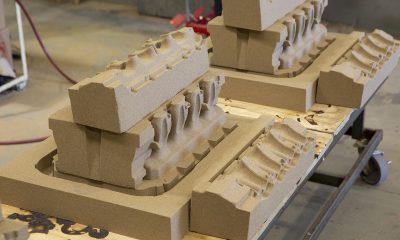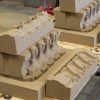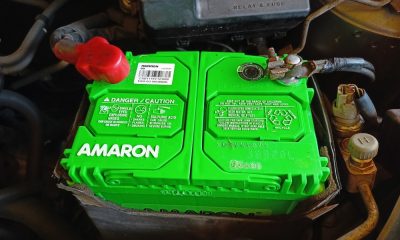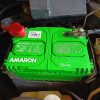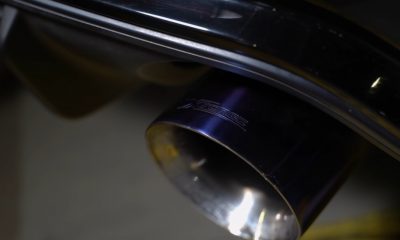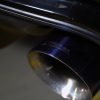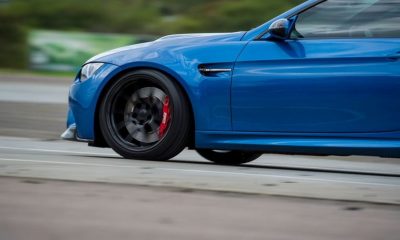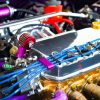Automotive
A Guide to Honda Civic Mods: Benefits of Aftermarket Mods
Notoriously missing from this year’s lineup in Honda dealerships is the Civic Type-R. Honda offers only two engine variants, the carryover 1.5 turbo and a new hybrid. The previous Type-R (FK8), based on the 10th generation Civic sold in droves. It was at one time the fastest front-wheel car to lap the Nurburgring (with an official time of 7.50.6) and with a top speed of 272km/h, unseen till then in a hatch.
The missing replacement, and the fact that Honda opted to skyrocket prices for its new vehicles, haven’t exactly been greeted with cheers from its loyal customer base. But it’s not all bad news. Existing Civic owners can keep their hard-earned cash and instead go for performance-grade Honda Civic aftermarket parts.
The Type-R is the leftfield JDM alternative to the likes of the Subaru WRX and STI and Mitsubishi Lancer EVO, as well as the slew of front-wheel drive European hot hatches typified by the VW Golf GTi and the Renault Megane RS, coincidentally the two cars that snatched its Nurburgring throne. This variant of the Civic is no tamed cat. Its turbocharged 2-litre pumps out 235kW or 306hp in Aussie variants good for a 5-second sprint to 100km/h. And the engine pulls hard and high. The new car is said to have 20 more brumbies, set on a longer wheelbase and a wider tread. A guarantee for more thrills and driving fun, when it arrives at least.
Owners of the regular (FK) car are still treated to 175hp and a 0-100km/h in the mid-7s. Both Civic variants are ripe for modifications. Simple additions like a cold air intake paired with a bespoke aftermarket exhaust help in the power department, while bringing that newfound power down to the road is done with a complete body kit. Let’s take a closer look at what these performance additions do for your Civic.

Cold Air Intakes
One of the easiest ways to bump performance numbers, to the tune of 10 per cent of rated manufacturer figures, is to install an aftermarket air intake. This makes better use of the space in the engine bay to include wider and often straighter tubing leading to the intake manifold and beefed-up cone filters in their own air boxes to push more air in and at optimised angles. Air is also shielded from surrounding hot engine parts with heat shields and the filter is moved to the front of the engine. The cooler air is richer in oxygen, and this is a prerequisite for more efficient combustion.
What you get besides the added horses is crisper throttle response (not that any Type-R is found lacking), a raspier engine rumble, and in the regular Civic better fuel use. Emissions aren’t affected and you reap further rewards without having to replace paper filters all that often. Cold air intakes are one of the first mods, from a long list of performance additions and set the foundation for what follows.
Revised Exhausts
Stock Honda exhausts can be restrictive and limit optimal airflow. This is even more evident in turbocharged engines, both the 1.5 and 2 litre in the Type-R. Aftermarket exhausts offer a few major benefits over stock. The tubing is wider, set straighter (and with minimal bends), and designed to allow exhaust gases to exit faster. There’s better exhaust scavenging, essentially replacing spent gases with fresh air needed for combustion in the cylinders quicker, improved turbo performance, and better efficiency. This all translates to more horsepower, improved throttle response and better acceleration.
The positives though don’t end here. Aftermarket exhausts are better made, using high-grade steel with anti-corrosion coatings as well as titanium in the tips, and incorporate mandrel bending for increased strength for the whole length of the piping. There are also weight savings, as you can shave off quite a few kilos without sacrificing durability. And lastly, Honda owners can fine-tune the exhaust note just the way they like with or without the use of mufflers and resonators.
Different piping configurations mean there are a lot of choices. Cat-back exhausts replace stock parts from the catalytic converter to the tips with straighter and wider tubing. Better airflow is achieved with a modified downpipe and additions like a catless mid pipe or widened mufflers. Turbo-back systems improve exhaust manifold and header designs for better overall airflow, reduced pressures and temperatures, and optimal turbo performance.
As mentioned, cold air intakes work best with revised exhausts to let the engine breathe. And if you’re thinking of changing out the internals, or installing a bigger, faster spooling turbo, these are the mods that are done first.

Body Kit
One of the distinct features of the Type-R is the red badge. The other is the prominent rear wing. Both are used for good visual effects, but the wing also serves to keep the rear axle planted as speeds increase. However, body kit parts rarely work on their own. For improved aerodynamics (higher downforce, reduced drag and lift), you’ll be looking at a combination of different Honda Civic aftermarket parts.
Front lips or splitters for instance split oncoming air, with the majority sent over the car for increased downforce, and the rest at lower pressure and higher speed under the car. Front spoilers ‘spoil’ air left and right, and this helps keeps the car stable in turns. Side skirts are fitted between the wheel arches and prevent the build-up of air under the vehicle as this can lead to lift, and the loss of traction in the tyres.
Lastly, air at the back is handled with rear diffusers and installed at the lower end of the bumper. The complete package improves handling with a more direct steering feel, provides better grip by keeping the car glued to the road, and adds visual appeal.
Materials, workmanship, and overall fit and finish all impact price. Fibreglass body kit parts are lightweight and cheap but lack flexibility and can crack when hitting curbs or scraping potholes. ABS plastic is a step up, with increased strength, being also more flexible but with a weight penalty over fibreglass, so not really suited for racing applications.
If you’re serious about performance, then carbon fibre body parts are what to choose. These are the lightest, strongest, and look the part. Just don’t be surprised by the price. For a seamless fit with the rest of the car, and any needed paintwork, get Honda Civic body kit parts installed at the shop.
Writing for the blog since 2012, Chris simply loves the idea of providing people with useful info on business, technology, vehicles, industry, sports and travel – all subjects of his interest. Even though he sounds like quite the butch, he’d watch a chick flick occasionally if it makes the wife happy, and he’s a fan of skincare routines though you’d never have him admit that unless you compliment his impeccable skin complexion.

